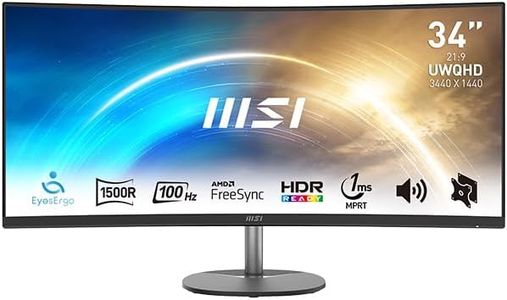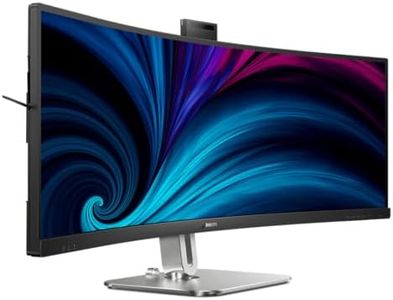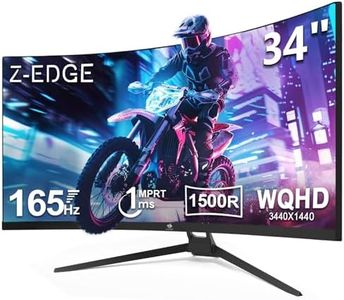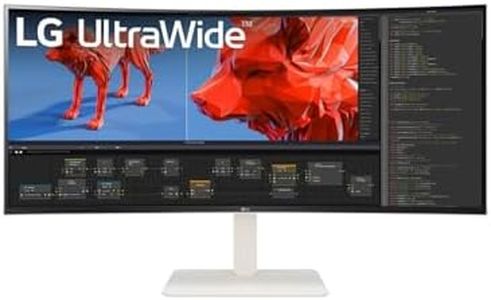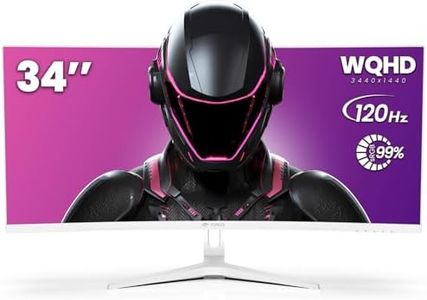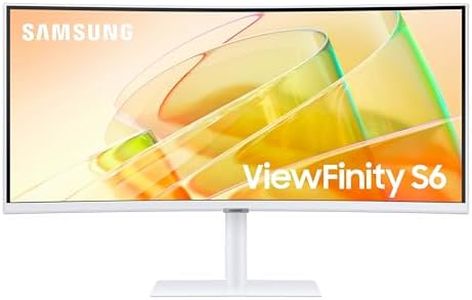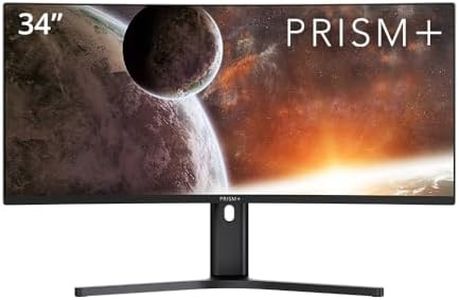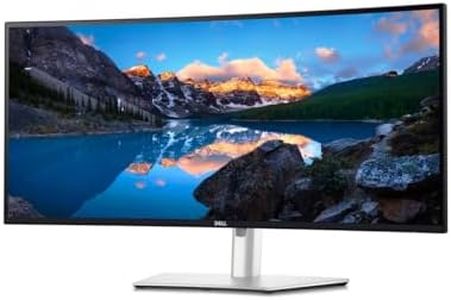We Use CookiesWe use cookies to enhance the security, performance,
functionality and for analytical and promotional activities. By continuing to browse this site you
are agreeing to our privacy policy
10 Best Ultrawide Monitor For Macbook
From leading brands and best sellers available on the web.Buying Guide for the Best Ultrawide Monitor For Macbook
Choosing an ultrawide monitor for your MacBook can elevate productivity, enhance your workspace, and provide a more immersive viewing experience. As you consider your options, think about your primary tasks—whether it's work, design, gaming, or multimedia. Also, ensure compatibility with your MacBook in terms of connectivity and display support to get the most seamless experience.Screen SizeScreen size refers to the diagonal measurement of the display, usually given in inches. An ultrawide monitor generally ranges from 29 inches to 49 inches. Smaller sizes (29-34 inches) are great for basic multitasking and compact desks, while larger sizes (38-49 inches) offer expansive real estate for creative work, multitasking, and gaming. Consider how much physical desk space you have, as well as whether you prefer a more 'wrapped around' immersive experience or simply more room for side-by-side windows when deciding on screen size.
Aspect RatioThe aspect ratio of ultrawide monitors is typically 21:9 or 32:9, compared to the standard 16:9. A 21:9 is more common and provides extra horizontal space for multitasking and timelines in creative work, while 32:9 is like having two monitors in one and is excellent for heavy multitasking or immersive gaming. Your choice should depend on how many windows or applications you like to keep open at once and the kind of work you do.
ResolutionResolution tells you how many pixels the screen displays, affecting sharpness and clarity. Ultrawide monitors often come in resolutions like 2560x1080, 3440x1440, or 5120x1440. Lower resolutions can look less crisp, especially as screen size increases. Higher resolutions provide clearer text and images, which is important if you spend lots of time reading, editing, or designing. If you want sharp visuals and do a lot of graphical work, aim for higher resolutions. If you use your monitor mostly for document work or web browsing, mid-range resolutions might suffice.
Panel Type (IPS, VA, TN)Panel type impacts color accuracy, viewing angles, and response times. IPS panels offer the best color accuracy and wide viewing angles, great for design and media work. VA panels have higher contrast and deeper blacks, which benefits watching movies and some gaming. TN panels provide fast response times at the expense of color and angles, but are less common in ultrawides. Your decision should be guided by how important color accuracy and viewing angles are for your work and how often others need to see your screen.
Refresh RateRefresh rate is measured in hertz (Hz) and refers to how many times the screen updates per second. Most ultrawide monitors have refresh rates from 60Hz to 144Hz and beyond. A 60Hz rate is fine for everyday work and most professional tasks. Higher refresh rates (100Hz, 120Hz, or 144Hz) make motion look smoother, which benefits gaming and fast-paced video editing. If you mainly use your MacBook for office work or creative non-video tasks, 60Hz is enough. If you plan on gaming or want a super-smooth feel, consider a higher refresh rate.
Connectivity OptionsConnectivity options describe the ports available to connect your MacBook to the monitor. Look for USB-C or Thunderbolt if you want to connect your MacBook with a single cable that also charges your laptop. HDMI and DisplayPort are also common, but may need adapters. If you want a tidy setup and the convenience of charging while displaying, prioritize monitors with USB-C or Thunderbolt ports that provide enough wattage for your MacBook. Make sure to check your MacBook’s supported connections.
Ergonomics and Stand AdjustabilityErgonomics refers to how easily you can adjust the monitor’s height, tilt, and swivel for comfortable viewing. Adjustable stands allow you to customize the position, which helps reduce neck and eye strain over long hours. If you spend extended periods at your desk or share the monitor with others, look for monitors with extensive adjustability. If your setup is more static, this might be less critical.
Color Coverage (sRGB, AdobeRGB, DCI-P3)Color coverage tells you how accurately a monitor displays various color spaces. A high percentage of sRGB is important for web content and general use, while AdobeRGB and DCI-P3 are important for photography, video editing, and design work. If you’re a creative who needs color accuracy for your work, look for monitors with higher coverage in these color spaces, often specified in percentages.
CurvatureSome ultrawide monitors are curved, which can make the viewing experience more immersive and reduce the need to turn your head. Curvature is measured in 'R' (like 1800R or 1500R), with lower numbers meaning a more pronounced curve. If you want greater immersion for gaming or creative work, or if you’ll be sitting close to a large screen, a curved model might be beneficial. If you prefer a traditional flat screen or work with precise designs, a flat monitor could be better.


